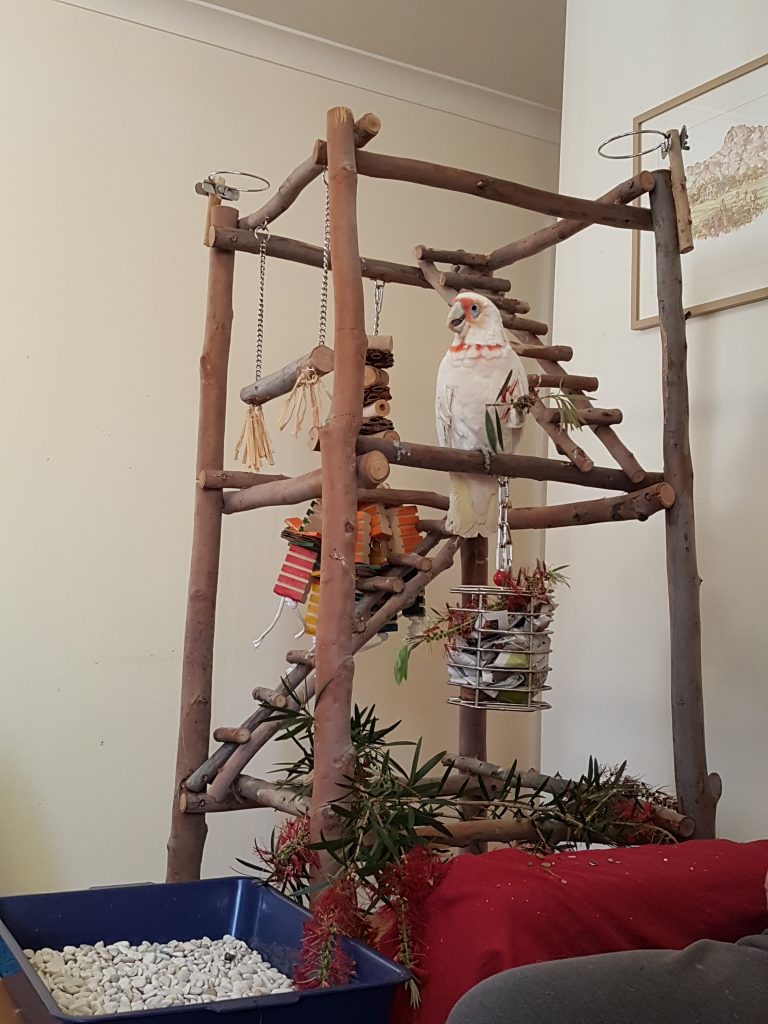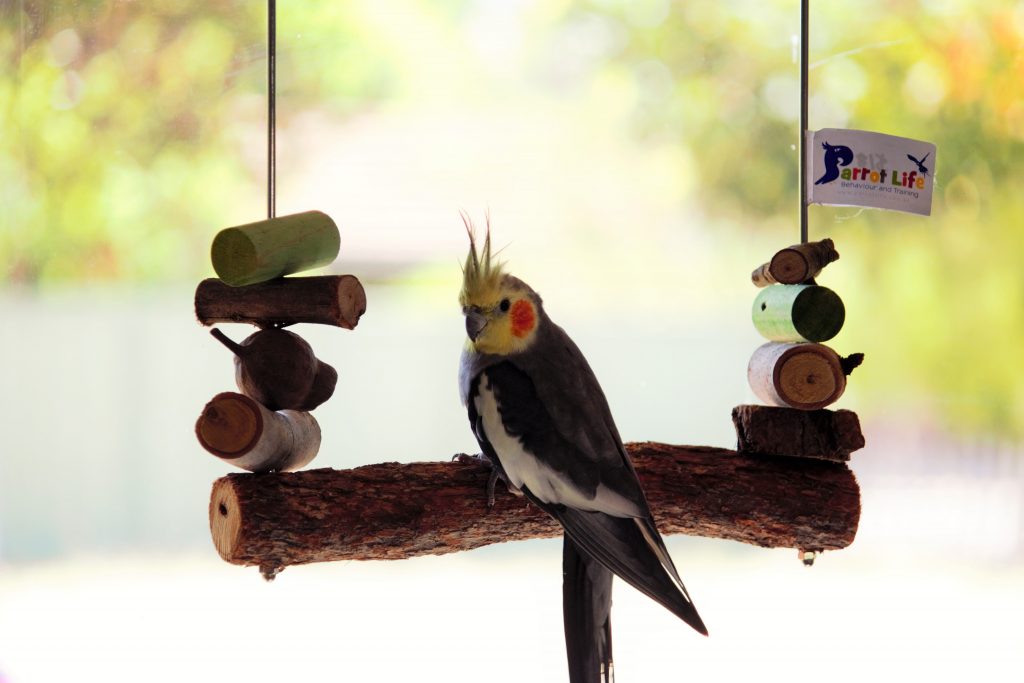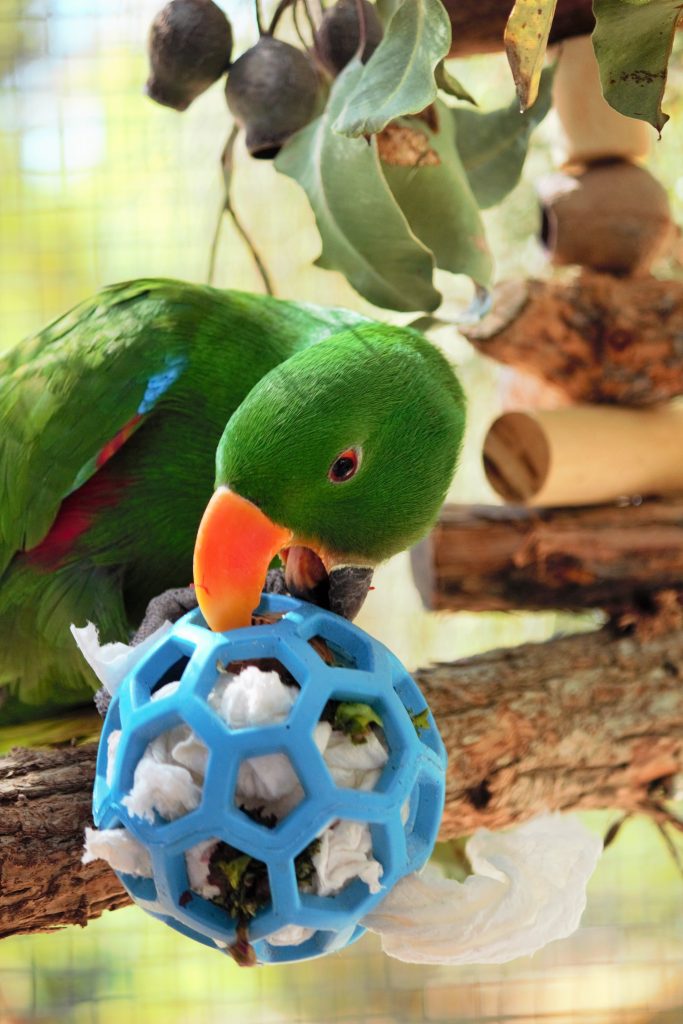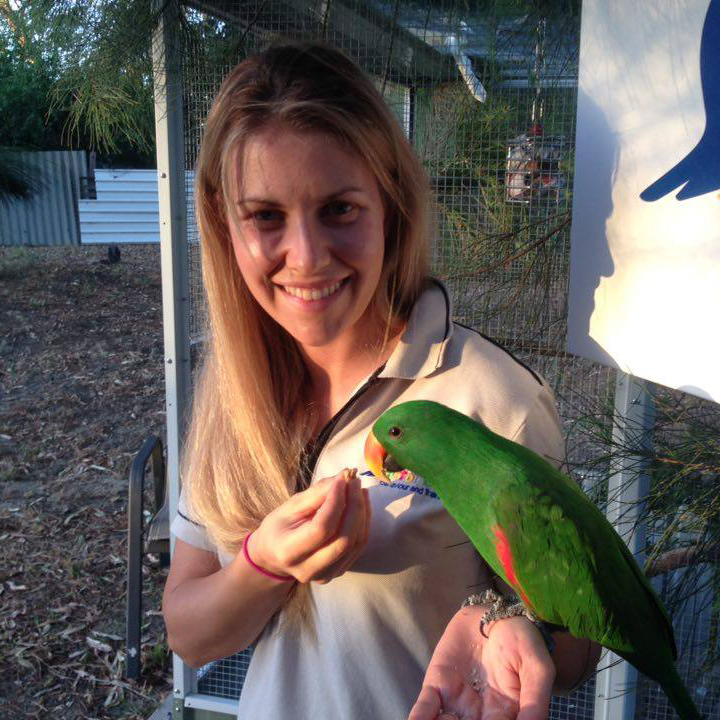Parrot Enrichment at Home
Enrichment should be part of the daily routine for every parrot owner. It is just as important to your parrot as having food and water. Lack of enrichment, along with poor diet, can cause most of the common behavioural issues with pet parrots. Preparing enrichment can easily become part of your daily routine. It can be quick and inexpensive, and your parrot will love you for it.
How do you provide enrichment? Research your species in the wild, and look for information on what they do, where and what they forage on. Do they live in small flocks with strong family bonds like macaws or fly in large flocks like cockatiels? Do they forage mostly in the canopy or on the ground? How can you replicate this in your home?

Social Enrichment
Parrots are extremely social animals and form close bonds. Social enrichment is the enrichment your bird gets from seeing and interacting with their ‘flock’, socialisation with new people, birds or animals, and learning to communicate with you through basic training. In captivity, keeping a parrot with other parrots is always best. Even just one for the company will enrich its life significantly in a way that very few humans or other pets ever will. If you can only have one bird, then the full responsibility for social enrichment falls to the human ‘flock’. Luckily, parrots are amazingly adaptable, so a single parrot that is well-enriched can live a happy and fulfilled life.
Aim for: As much company, positive interaction as possible, and daily training time.
Foraging Enrichment

In the wild, parrots will spend most of their waking hours in search of food! Many species of parrots have developed amazing problem-solving skills to find hidden food sources. ‘Captive foraging’ provides challenges for your bird to work for food and exercise that powerful brain! From one day to the next, change things up; place the food in different areas, hide food in something that your bird has to destroy to find it (i.e. a toilet roll or paper bag), use baffle cages or foraging trays to hide treats in – the possibilities are endless. Browse(natural vegetation) is an amazing enrichment. Know your local parrot-safe vegetation and try to provide some daily. Hang it so it falls naturally to encourage exercise – they will climb all over it, hang it upside down, and rip off bark and leaves. When they are done, recycle the mess into new perches, standing ‘trees’ to hang toys off, or use twigs and leaf litter for foraging trays.
Aim for: one new foraging item and browse item per day.
Novel Object Enrichment

This covers parrot toys you may buy in a pet shop, such as ladders, nets, brightly coloured blocks of wood, foot toys and so on. These are often chewed, destroyed and discarded, but play an important role in the health of beaks, nails, beak-foot coordination, brain and muscle development and confidence around new things. While pre-made toys can be expensive, you can cheaply create novel enrichments by combining bird-safe materials. Use untreated wood sources to make swings, baby or bird toy parts threaded together to create a new toy, stainless steel kitchenware to play with reflections, or paper to shred. Get creative, layer the toys, and have fun. You will take a huge amount of personal pleasure in watching your bird enjoy itself and destroy what you have created.
Aim for: one new object per day
To see our range of foraging toys or for information on parrot enrichment and how to apply it, visit us at www.parrotlife.com.au
Article written by Rachel Riley of Parrot Life

